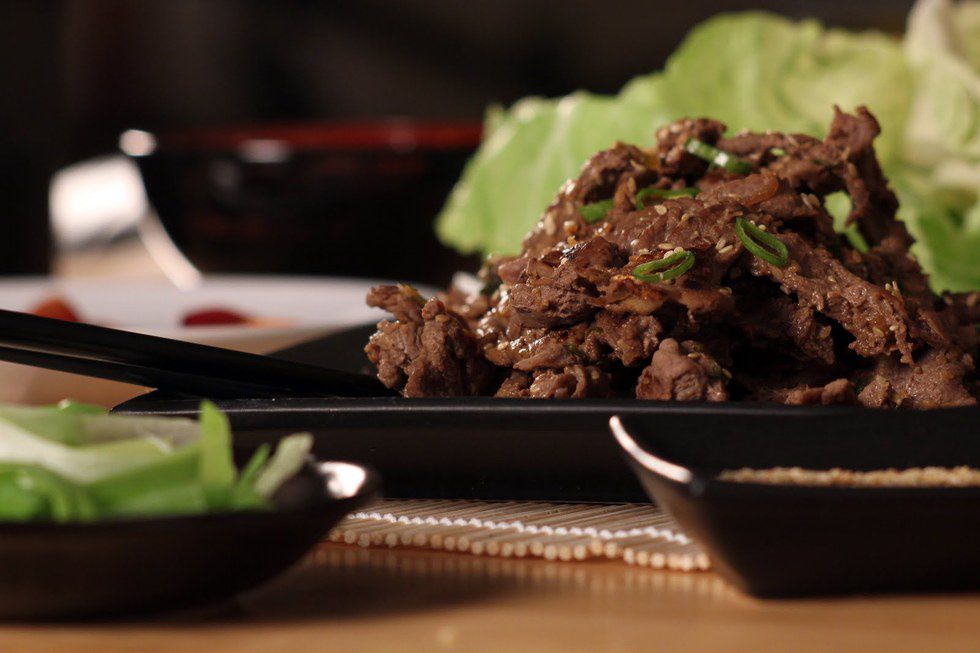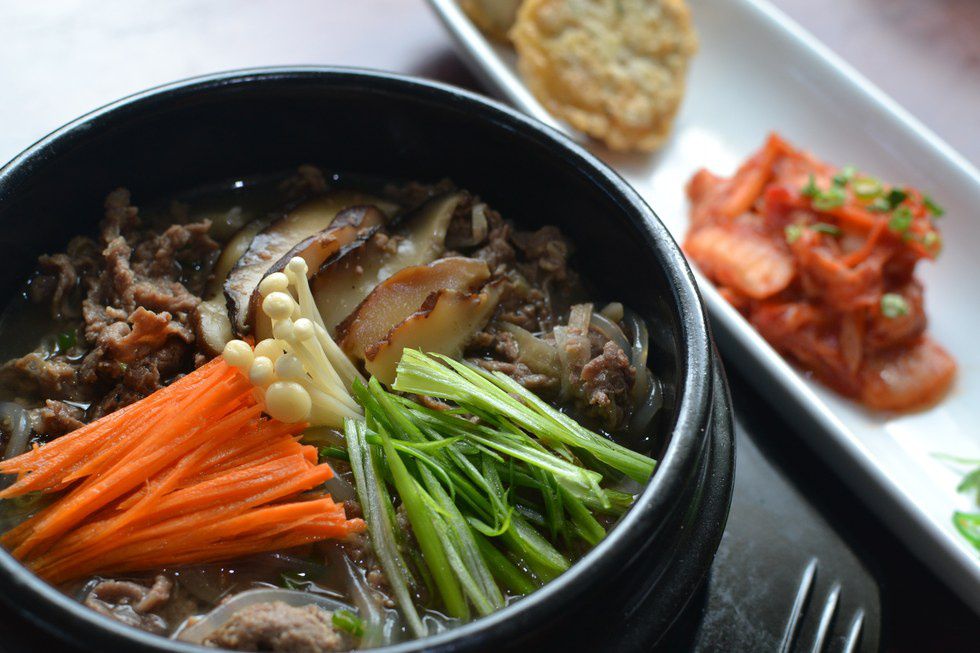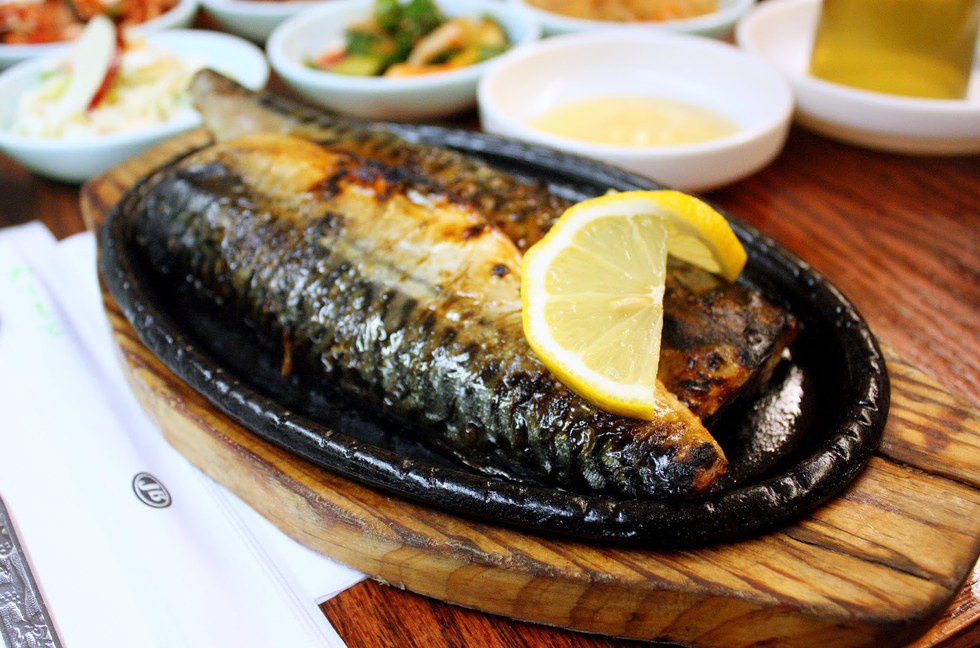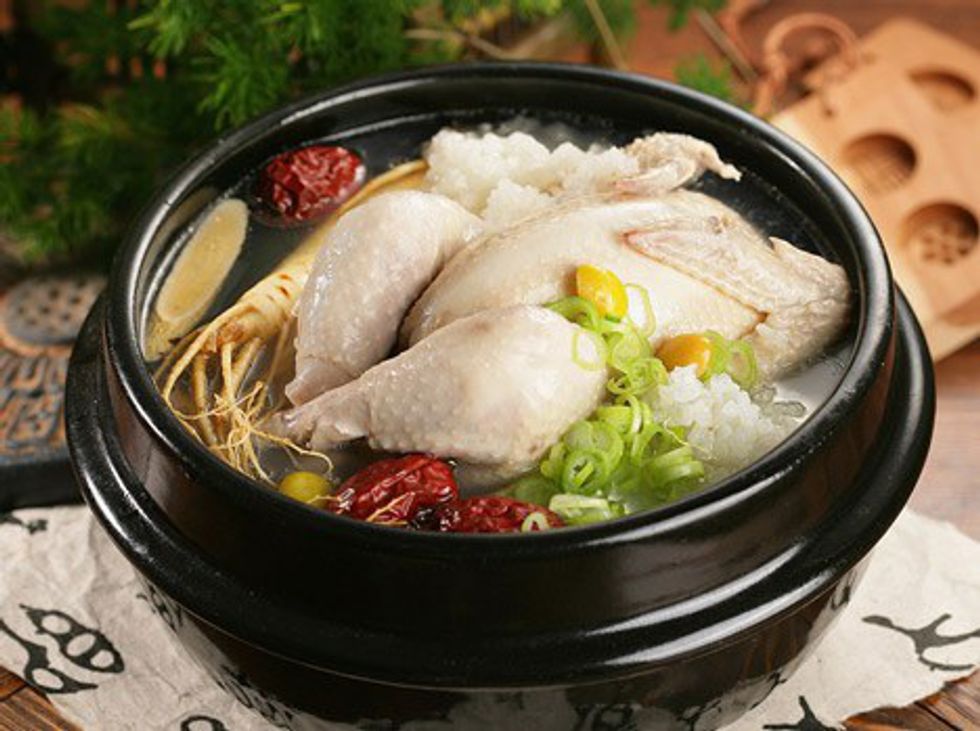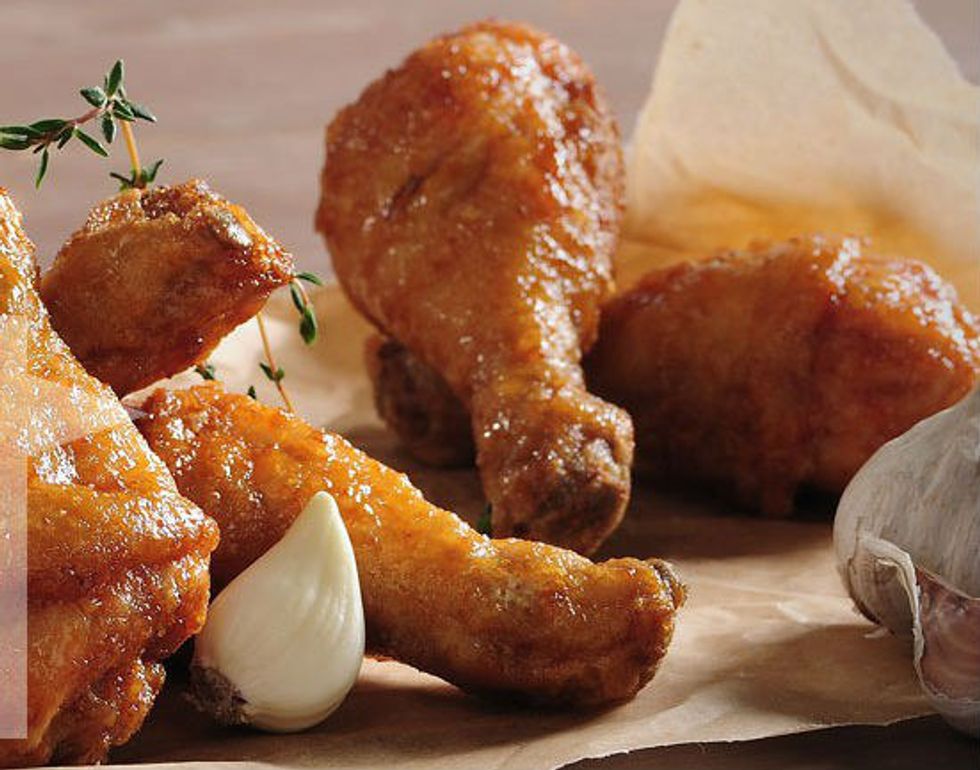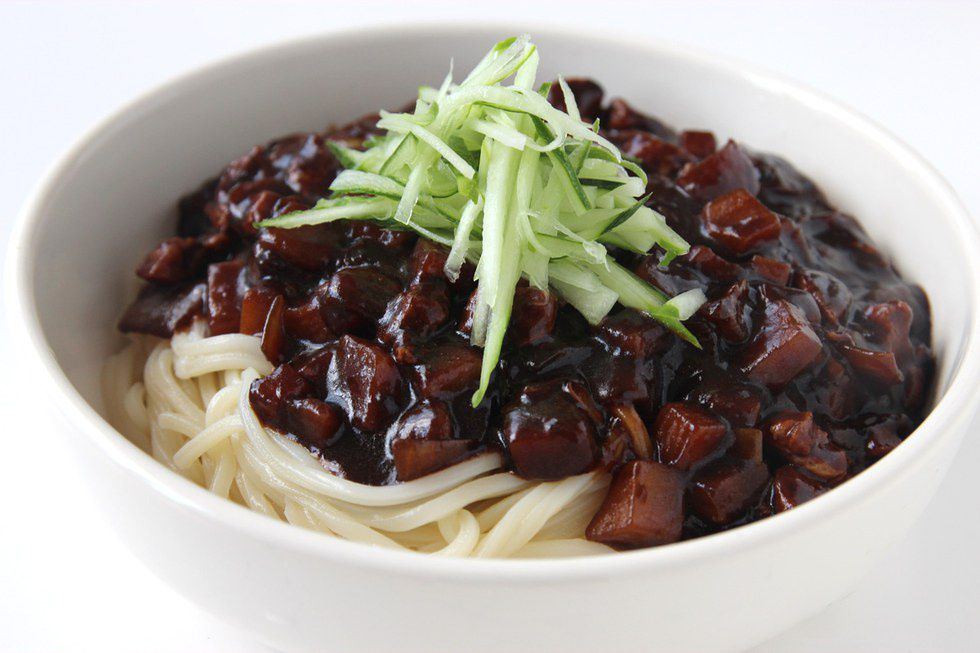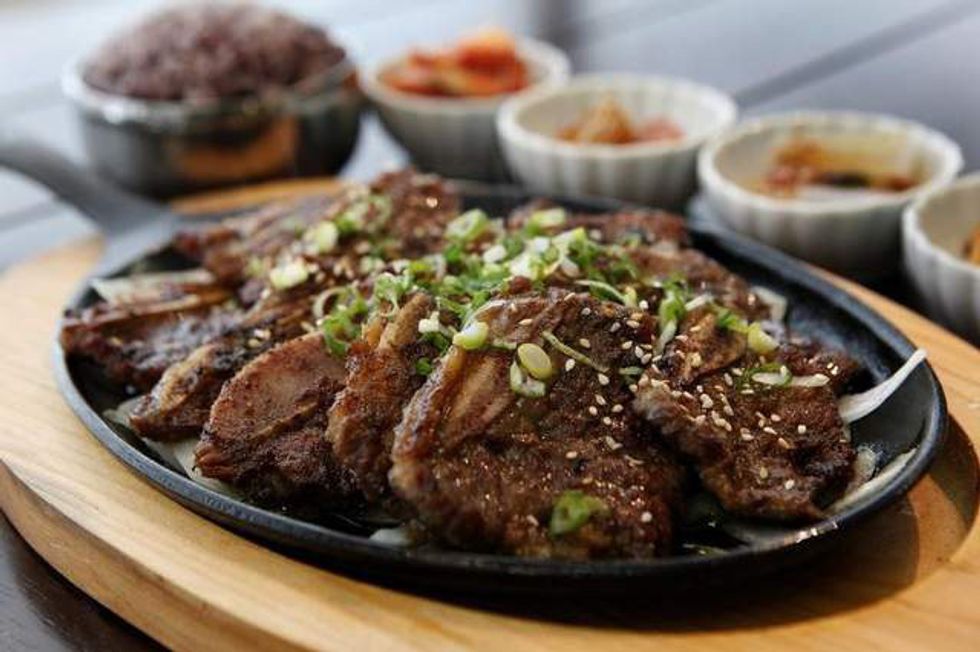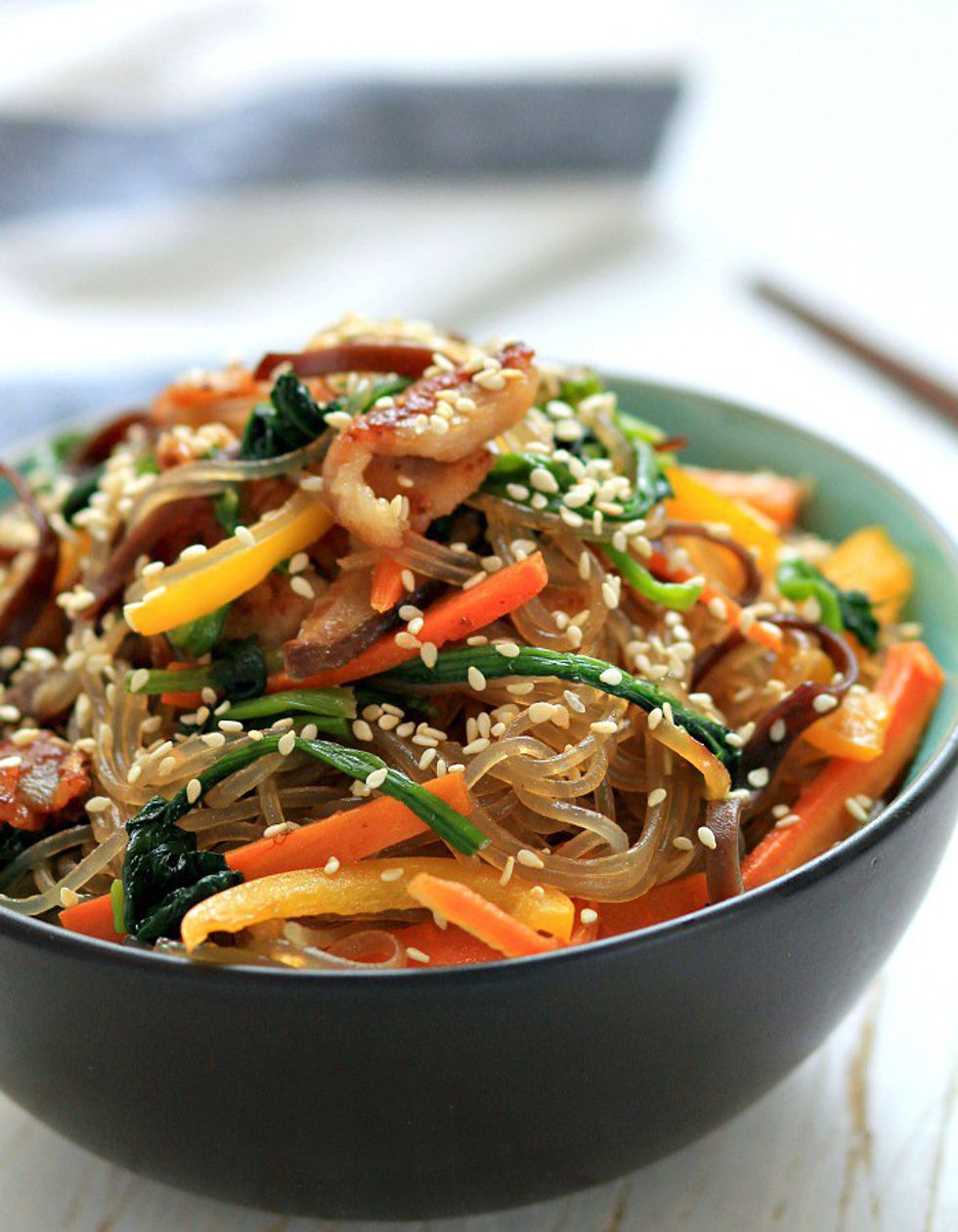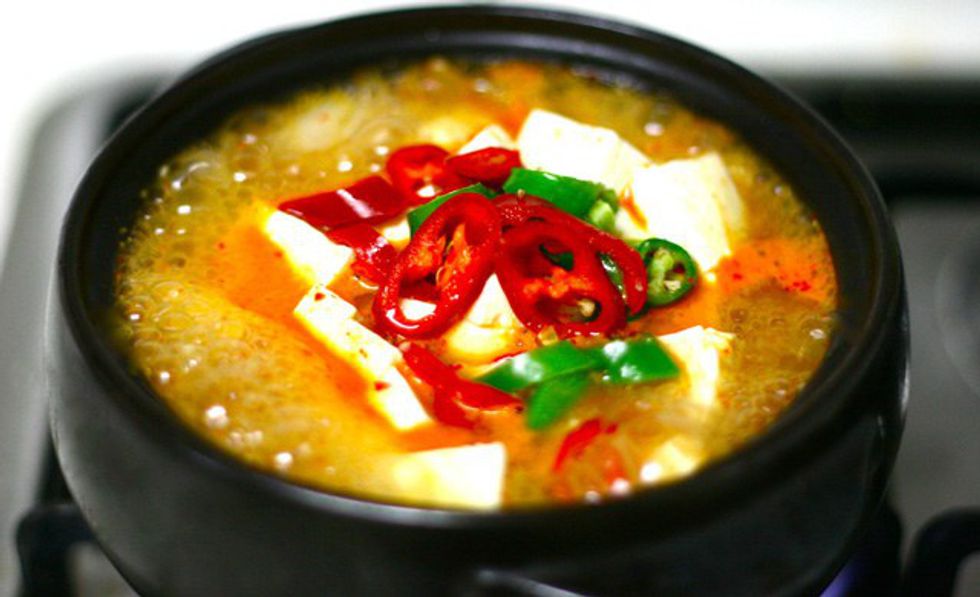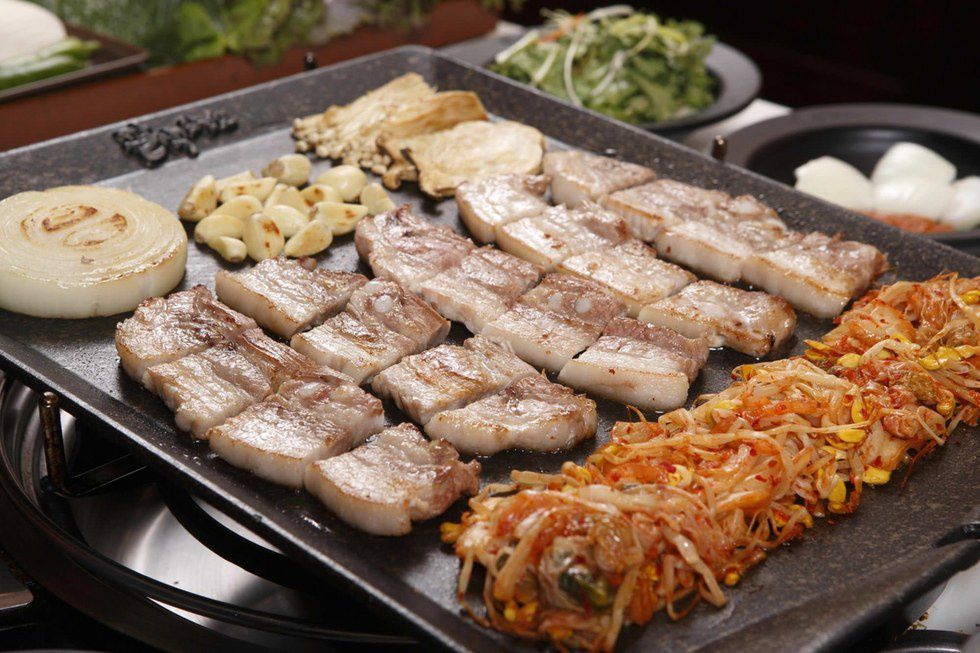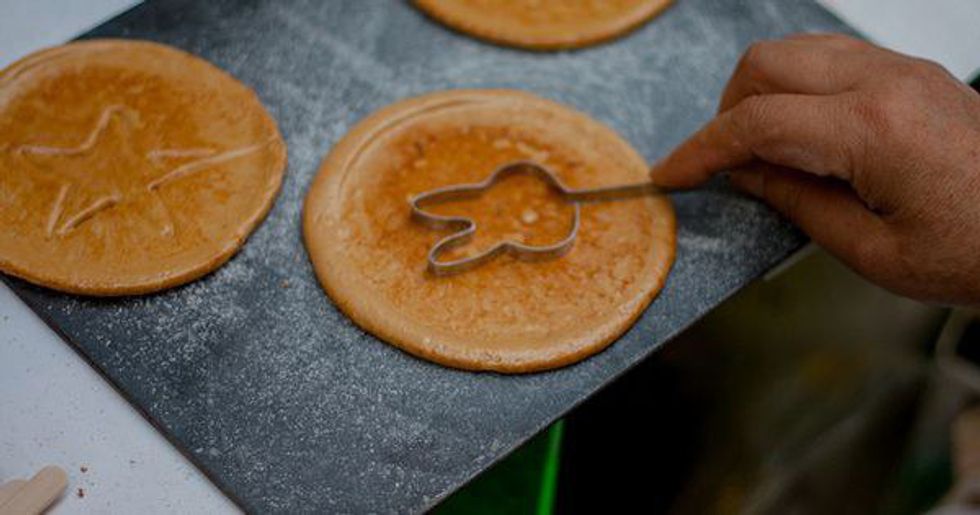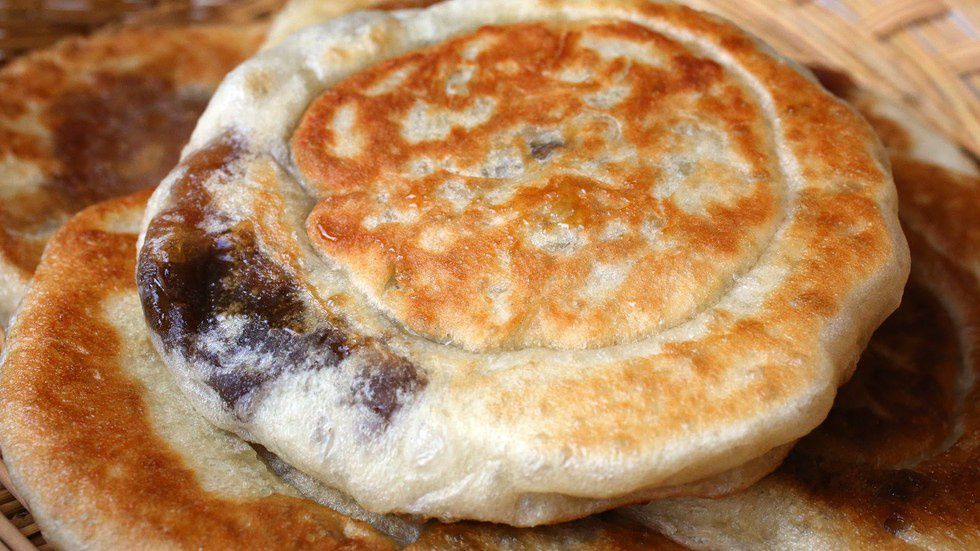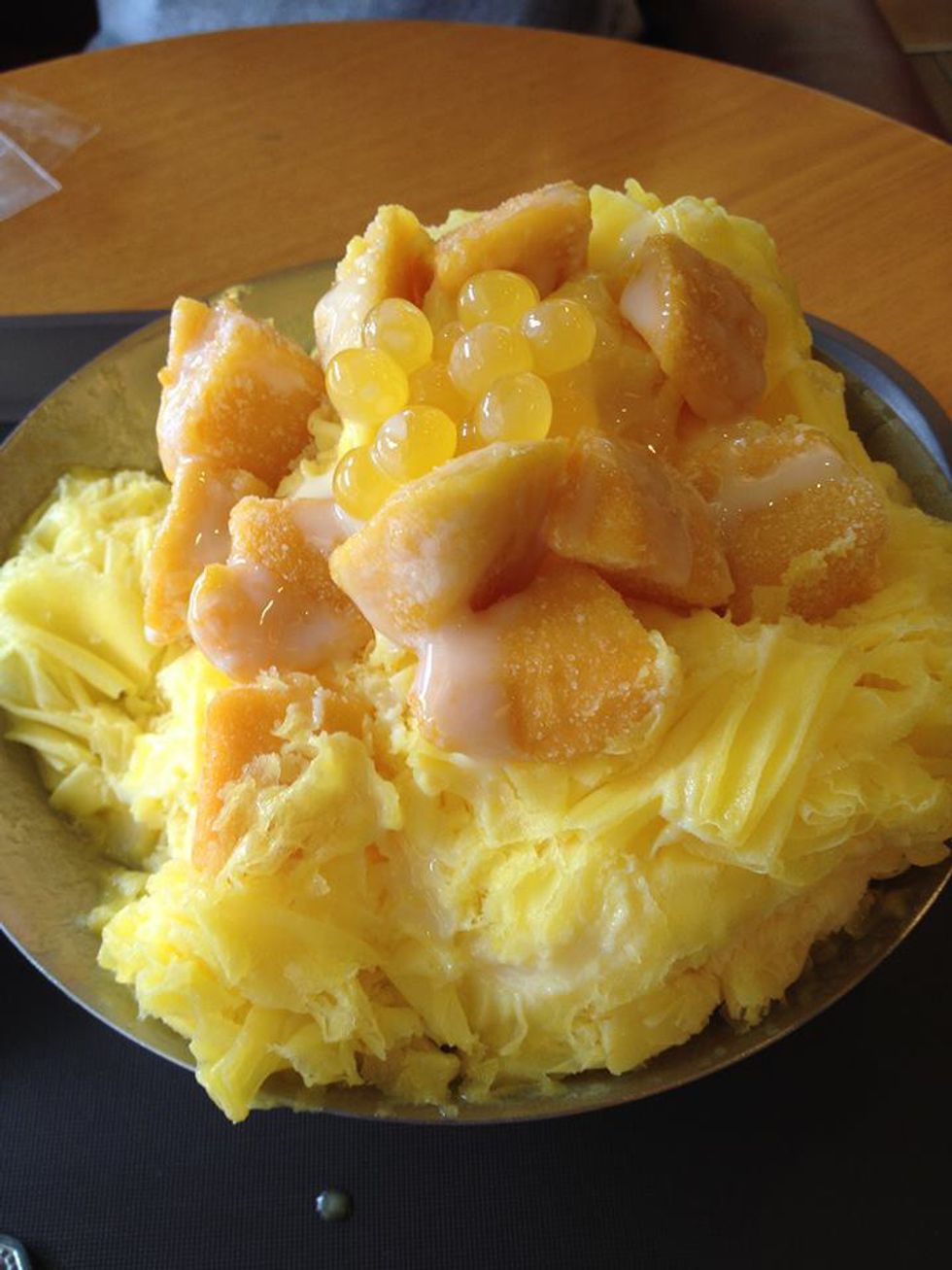Korean food is starting to get more and more recognition for being the delicious gift to the culinary world. Even in my small town, Korean restaurants and chains are popping up, and it's glorious. The food is often healthy and colorful, and many dishes are naturally gluten free (the only stumbling block to this is soy sauce, if you happen to be on a very strict gluten free diet).
Whether you are new to this cuisine or you're simply searching for new dishes to try, I've compiled a list of mouthwatering Korean foods (including some desserts at the end), that are great for first-timers and seasoned eaters alike.
1. Bulgogi 
Bulgogi is thinly-sliced marinated beef. Some restaurants let you grill it at the table. It's usually eaten wrapped in lettuce along with rice and sauce, and is a safe bet for beginners. It's tender and has a lot of familiar flavors -- soy sauce, garlic and green onion are some ingredients of the marinade that are readily recognizable to anyone.
2. Bulgogi Hot Pot
This is a stew made using the bulgogi. It's rich and flavorful, containing the meat, glass noodles (which are naturally gluten free) and an assortment of vegetables. The vegetables might differ depending on where you get it, but usually it'll have carrots, mushrooms, green onions and sometimes bell peppers. It's rich, savory and all-around delicious.
3. Grilled Mackerel
Okay, so I realize that this isn't the prettiest meal you'll ever eat, but you can't cheat. For the full experience, you need to eat the whole fish. Sometimes (especially if you eat it in America) the head will be removed for you, but the tail and skin will remain. It's semi-cheating in my book, but I'll let it slide. The fish meat falls off the bones; it's tender, moist and wonderfully salty.
4. Chicken Ginseng Soup
This is a very traditional and incredibly flavorful dish. Come hungry if you want to eat this, though, because each soup comes with an entire cornish hen. The chicken is stuffed with ginseng, rice, garlic and jujube. Even though it's a hot dish, it's traditionally eaten in the summer because of the idea that the temperature inside your body needs to be raised to meet the temperature outside. It's also incredibly healthy, as ginseng has a multitude of health benefits.
5. Korean Fried Chicken
American fried chicken will never be the same; take everything you know about fried chicken and throw it out the window. This stuff is flavorful (with a variety of flavors), crunchy and moist. It's even messier than the fried chicken we're used to, and it's naturally gluten free--instead of being coated in flour, it's coated in corn starch. It's also readily available in America, depending on where you live--Bonchon is an American-based restaurant that specializes in Korean fried chicken. Chicken and beer is such a popular combination in South Korea that there's an official slang word for it. You won't regret this decision, except for the fact that it might make you poor.
6. Jjajangmyeon
Jjajangmyeon is a (wheat-based) noodle dish with black bean sauce, cubed pork and usually zucchini and carrots. Once again, vegetables change based on the cook's choice, but those are the most commonly used veggies. There's brown sugar in the sauce too, so it's not bitter or bland; I don't even like beans and I love this dish. It's also the signature dish of a holiday in Korea, Black Day, during which single people who didn't get gifts on Valentine's Day or White Day drown their sorrows in jjajangmyeon.
7. Galbi
Galbi is marinated beef short ribs, eaten right off the bone. The meat is incredibly tender and falls right off. It's definitely a more expensive dish, but man is it good.
8. Japchae
Japchae has a lot of elements to it--glass noodles, beef, bell peppers, onions, green onions, mushrooms, carrots, sesame seeds and seaweed or spinach (you'll usually see spinach in the U.S.). The sauce is a combination of soy sauce and sesame seed oil. This dish is incredibly colorful, very flavorful and really healthy.
9. Soybean Paste Stew
This will probably be the biggest stretch for those of you new to Korean food. The word "fermented" is often an automatic turn-off to Americans, and fermented soybean paste is a major ingredient in this soup. In addition to the paste, the soup contains garlic, Korean radish, red and green chili peppers, green onions and tofu. Sometimes it'll have seafood, too, but this depends upon where you go. It has a bit of a kick and the fermented soybean paste is a very distinct taste, but it's very good--it goes well with the next dish on this list, samgyupsal.
10. Samgyupsal
Think thick-cut, uncured bacon grilled to perfection and you have samgyupsal down pat. It's delicious and juicy; like bulgogi, it's often wrapped in lettuce, rice and comes with a special dipping sauce, but I love it so much that I often forgo the awkward ritual of shoving all of that in my mouth in favor of popping the meat straight in. Just as beer and fried chicken go hand-in-hand in Korea, soju and samgyupsal are considered a winning combination. Best of all, it's cheap (in Korea, at least, not so much in America). For American restaurants, if there's a thick-cut option you want to go for it. The thicker it is the juicier it is, and the juicier it is the better it tastes.
11. Ppopgi
Ppopgi is a Korean dessert with a long history. I've heard that it dates back as far as the Joseon Era (1392 - 1910), but I can't find an article written in English that corroborates this. It's made only of sugar and baking soda, so it's very easy to make at home, but it does require a lot of attention and patience. Not only is it deliciously sweet and crunchy, but you're allowed to play with it--the goal is to pop out the little shape without breaking it. If you succeed, you'll be rewarded with a free one. Unfortunately, you'll likely only be able to find it on the streets of Korea, sold as a street food.
12. Hoddeok
This is another street food in Korea, but it's easy to make at home if you really want to. It's a yeast-based, homemade dough stuffed with cinnamon, brown sugar and walnuts. The stuffed, round pancakes are then fried on one side, flipped and flattened and then fried again. The result is a gooey center of sugary goodness. I make this both at home and at college all the time, and I've never introduced it to anyone who didn't like it. These are very versatile treats and can also be stuffed with cheese, japchae and a multitude of other foods.
13. Bingsu
This is another traditional dessert. It's available in America depending on where you live. Big cities such as LA and New York are more likely to have it, but small towns are plum out of luck. If you ever go to South Korea, though, it's literally everywhere. Bingsu is a shaved ice dessert that comes in many different flavors and is meant to be shared between two to four people (they're massive). The ice is usually sweet, almost like they've used sweetened milk of some sort, and is very soft and fine. The softer the ice, the higher quality bingsu you have; you don't want the ice to be the consistency of a snow cone. Toppings vary from fruit and mochi to chocolate and even pop rocks. The one pictured above is a mango bingsu I ate in Seoul; the ice was frozen mango juice, mangos covered it and vanilla ice cream lurked in the bottom of the dish. You haven't lived until you've eaten this stuff.


